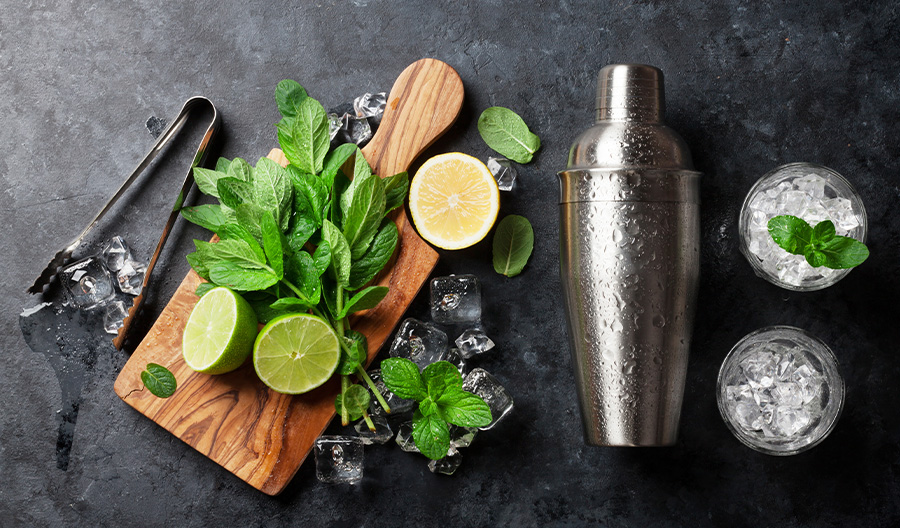Most likely, you’re already familiar with the mojito, a refreshing mix of white rum, lime juice and sugar flavored with plenty of fresh mint and topped with soda water. Served tall and bubbly over ice, it’s an ideal cooler on a hot day.
While many bartenders say they hate making mojitos—citing the labor of muddling mint for large groups of thirsty guests—the drink is relatively easy to make at home. Selecting the best rum for the job is half the battle.
The sugarcane-based spirit, which is made all over the world, is often (but not always) aged in oak barrels. It boasts a wide array of aromas that span from nuanced brown sugar, coconut or vanilla to mild grassy, citrusy or fruity tones.
White rum is generally the preferred spirit for the mojito. It tends to be crisp and light; some even have nuanced citrus or herbaceous tones that complement the other ingredients in the drink. Most importantly, the clarity of white rum just makes the drink look pristine, showing off the lime and mint in the glass.
By comparison, dark rum can make the drink look muddy. Further, some dark rums have pronounced caramel, toffee and spice notes that may overshadow the freshness of a typical mojito. That said, some bartenders mix aged (dark) rums into mojitos for a richer sip; it’s a matter of personal preference. But nine times out of 10, white rum is what you’ll find in this drink.

What Type of Rum Is Best for Mojitos?
In general, any white rum you enjoy is fair game for a mojito. Many pros steer toward rums on the softer, more neutral side of the spectrum, as the lime and mint will contribute plenty of flavor. That said, rums with distinctive grassy or funky tones, like some agricole rhums, are pleasing in a mojito if those are flavors you enjoy.
Some bottlings have naturally-occurring tinges of citrus or fresh herbs. While that’s not required, those complementary flavors can give a head start in building a harmonious mojito.
Spiced or flavored rums are likely to overpower the delicacy of the mojito’s signature cooling mint, so give those a pass. The exception: Some lime-flavored rums may work, if they don’t have a pronounced artificial flavor.
A final note: Be selective in using overproof rums to build a mojito. While the dilution provided by soda water and ice can balance out rums up to say, 50% abv, higher than that will create a powerfully boozy drink. In particular, skip the high-octane 151-proofers (75.5% abv), favored by bartenders to set drinks on fire. After all, one of the joys of the mojito is that it’s easy-sipping and sessionable—a drink to linger over with friends on a warm weather day.

